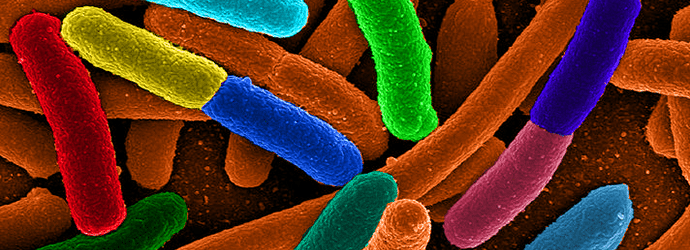When I first told a lab colleague I was going to be doing phage work in a lab that had otherwise only dealt with bacteria, I was met with expressions of awe, and then fear. Being that a bacteriophage is essentially a predator of bacteria, this reaction is legitimate for a bacteria-loving scientist. Also, we work side by side and so share pipetters, tips, and undergraduate students. And of course, my phage, ironically, attacks the bacteria my colleague studies.
To maintain a healthy lab relationship with your colleagues and keep your spot as a potential co-author on future publications, read on for tips on how to limit bacteriophage cross-contamination, not only in others’ samples, but your own:
Quarantine Yourself as Much as Possible
If you are the only virologist in your lab, it’s probably best to work as physically far away as possible (within reasonable constraints, of course), from others – especially those who are working with bacteria that you may use as hosts in your experiments. For reference, I sequester myself at least two lab benches away (approximately 10 ft).
Work in a Biological Safety Cabinet
Phages are notoriously easily aerosolized, so work in a BSC, preferably one with a UV light so you can UV everything once you are done. At a UV-C intensity of 125 uW/cm2 (an intensity representative of a standard BSC), 90% of viral particles are inactivated in <220 seconds.1
Enjoying this article? Get hard-won lab wisdom like this delivered to your inbox 3x a week.

Join over 65,000 fellow researchers saving time, reducing stress, and seeing their experiments succeed. Unsubscribe anytime.
Next issue goes out tomorrow; don’t miss it.
Don’t Share Pipetters
This one is obvious. Obtain a fresh set of pipetters restricted for your own use, preferably ones in which all parts are autoclavable. I use ones from Sartorius. I just wrap in tinfoil and throw them into a 15-min cycle. If you contaminate the inner barrel with phage, it’s pretty difficult to clean unless you take the whole thing apart. Further, you would need to calibrate it again afterward.
Use Filter Tips
Although all research is expensive, bacteriophage work costs significantly more than bacteriological work as they are finicky, tiny critters, that can aerosolize rather easily. To limit cross-contamination, stick to using filter tips.
Use a QUAT Sanitizer
Most labs use 70% ethanol for routine disinfection of surfaces and equipment. While this is suitable to get rid of bacteria, phage is significantly more resistant to EtOH. I recommend using a quaternary ammonium chloride for routine disinfection.
While prevention is best, see here for how you can get rid of bacteriophage that is already in your cultures. That’s it! I hope these tips are helpful to you, especially if you are a black sheep of sorts in your lab. Happy propagating!
References
1. UCB Risk Management Services. (2014). Use of UV germicidal lamps inside biosafety cabinets. Guidance Document # : UBCV-RMS-OHS-GDL
14-007.
You made it to the end—nice work! If you’re the kind of scientist who likes figuring things out without wasting half a day on trial and error, you’ll love our newsletter. Get 3 quick reads a week, packed with hard-won lab wisdom. Join FREE here.






